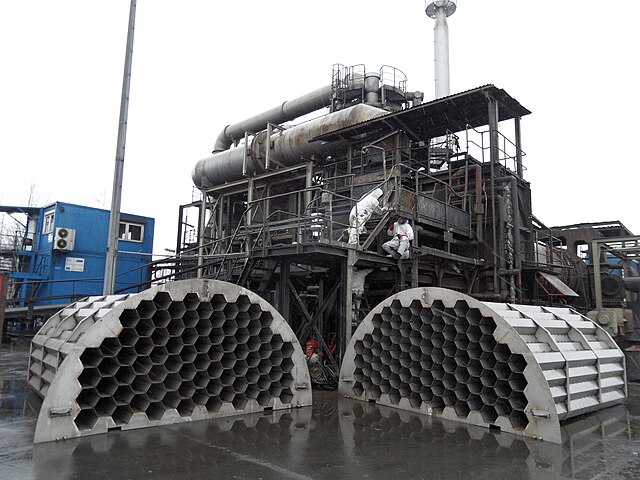Electrostatic precipitator
An electrostatic precipitator (ESP) is a filterless device that removes fine particles, such as dust and smoke, from a flowing gas using the force of an induced electrostatic charge minimally impeding the flow of gases through the unit.
Electrodes inside electrostatic precipitator
Collection electrode of an electrostatic precipitator in a waste incineration plant
Insulator assembly with housing and high voltage bus removed for maintenance and inspection. Insulators are typically used to hold up the electrode fields between the grounded collection plates.
Resistivity Values of Representative Dusts and Fumes From Industrial Plants
A corona discharge is an electrical discharge caused by the ionization of a fluid such as air surrounding a conductor carrying a high voltage. It represents a local region where the air has undergone electrical breakdown and become conductive, allowing charge to continuously leak off the conductor into the air. A corona discharge occurs at locations where the strength of the electric field around a conductor exceeds the dielectric strength of the air. It is often seen as a bluish glow in the air adjacent to pointed metal conductors carrying high voltages, and emits light by the same mechanism as a gas discharge lamp. Corona discharges can also happen in weather, such as thunderstorms, where objects like ship masts or airplane wings have a charge significantly different from the air around them.
Long exposure photograph of corona discharge on an insulator string of a 500 kV overhead power line. Corona discharges represent a significant power loss for electric utilities.
The corona discharge around a high-voltage coil
Corona discharge from a spoon attached to the high voltage terminal of a Tesla coil.
A variety of forms of corona discharge, from various metal objects. Notice, especially in the last two pictures, how the discharge is concentrated at the points on the objects.








